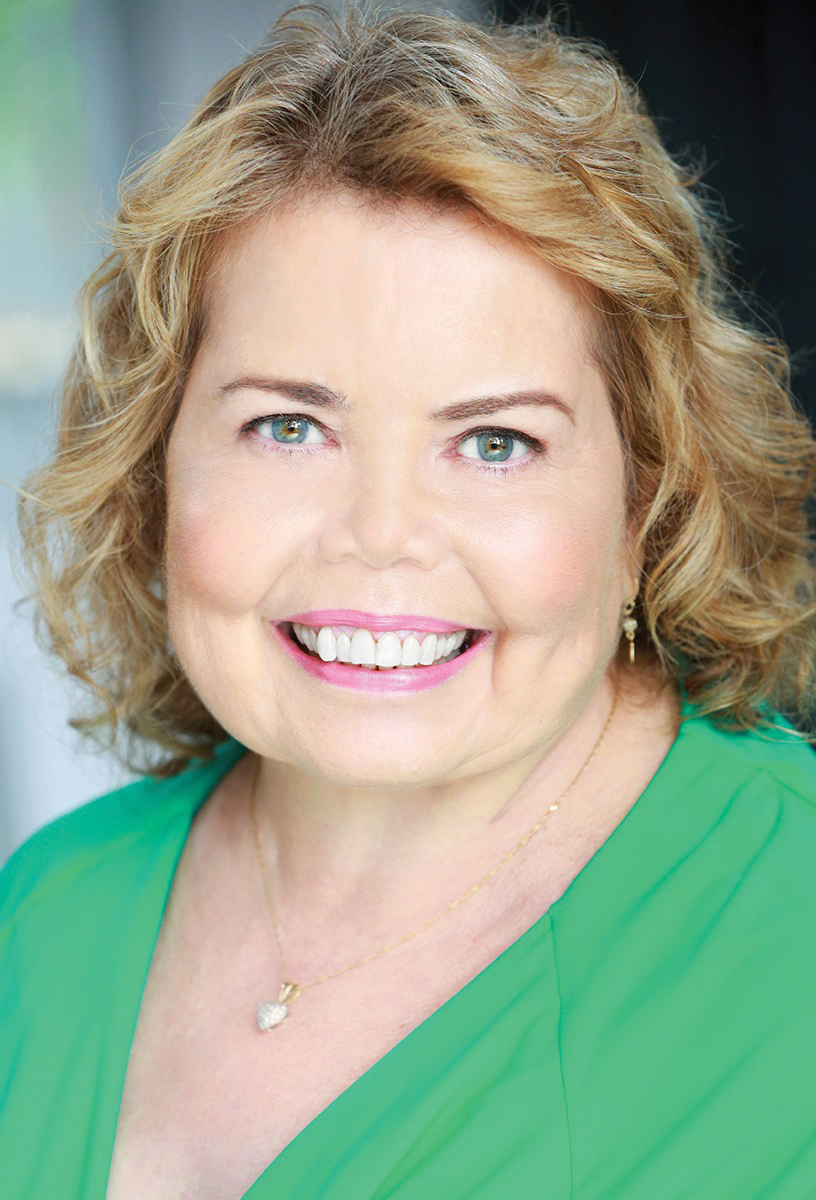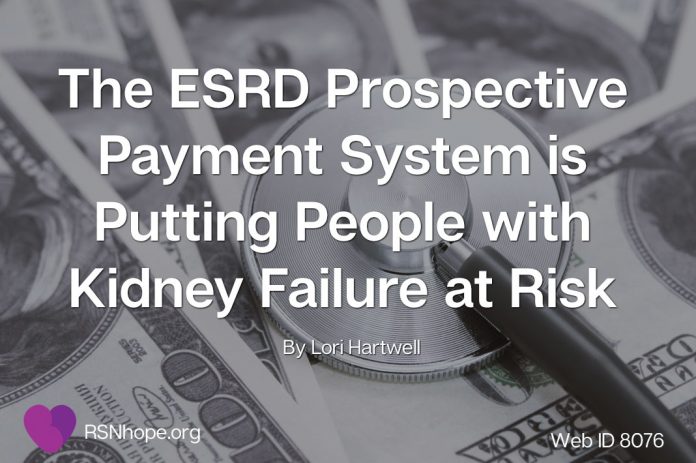The kidney health care system is becoming more challenging for people to have access to care. The latest CMS proposed payment rule* for 2024 reflects this trend and puts people who require dialysis at risk. In the 1960s, “life-and-death committees” that decided who would receive dialysis treatment sparked discussions about selection criteria. That was the beginning of modern medical ethics.
In the 1965 NBC documentary “Who Shall Live?” the committee revealed their struggles at the time over life-and-death issues. People with kidney failure had to wait and hope they were the ones picked to live.
Ethical dilemmas surrounding the allocation of dialysis treatment during that time ultimately contributed to the formation in the United States in 1972 of the Medicare End-Stage Renal Disease (ESRD) program. This program provided coverage for dialysis treatment for all eligible individuals regardless of age or income.
Creating access to Medicare for people with ESRD was indeed a compassionate decision for individuals with chronic kidney failure. It was a significant step towards providing healthcare for those who were previously unable to afford or obtain lifesaving treatment. We have come a long way from the 1960s and I have personally benefitted from numerous innovations in the kidney community since first being diagnosed in 1968 at age 2.However, after 50 years, the system is under great pressure. We are well on our way back to the days of “Who Shall Live?” if something isn’t done to correct this. Facilities will continue to close, reduce shifts or have long wait times to start home therapies due to lack of nurses. The reality is that ESRD disproportionately affects racial and ethnic minorities, and they will be hit the hardest.
No nurses, no care!
The nursing shortage is causing people with kidney failure to have limited access to treatment. Patients report the following:
“I was discharged from the hospital, and they are having trouble finding me a dialysis shift in my area.”
“I can’t travel as dialysis facilities are full.”
“My unit closed, and I must drive further to get care.”
“The dialysis shift I was assigned doesn’t work with my lifestyle.”
“Only shift open is at 5am. I’m often late and the staff are upset with me. I want to start home dialysis but there is long waiting list due to lack of training nurses.”
“Our nurse had an emergency, and it delayed the treatment as the facility worked to find another replacement for the day.”
“I’m afraid my unit will close it is privately owned and they struggle to stay afloat.”
“My unit just closed last Friday with 100 patients needing to find other units to take them.”
“My favorite nurse left during covid so have many others. The problem is real”
“I haven’t had a home dialysis nurse for a year.”
The CMS proposed 1.7% increase for calendar year 2024 will result in a base payment increase of $4.42 totaling $269.99 per treatment. This is intended to cover all items and services used to furnish outpatient maintenance dialysis in the facility or in a patient’s home. Renal dialysis services include, but are not limited to:
-
- Dialysis supplies, equipment, facility space, insurance, and maintenance
- Nephrologist, Nurses, Technicians, Social Workers, Dietitians, Biomedical Technician, Administrative and Medical Director, all Benefits
- Injectable drugs and oral equivalent medication
- Diagnostic laboratory tests for the treatment of people on dialysis
- Home and self-dialysis training, home machine lease
- Self-dialysis support services necessary for the effective performance of a patient’s dialysis furnished in the ESRD facility or in a patient’s home
- Monitoring access and related de-clotting or patient referral work
Snapshot of other sectors of care and what they are paid, and they have nowhere near the scope of work for payment:
Ophthalmologists: The cost of seeing an ophthalmologist (eye doctor) usually includes examination fees, vision tests, diagnostic tests, and any necessary treatments or procedures. On average, a comprehensive eye exam by an ophthalmologist can range from $100 to $300.
Dentists: Dental costs vary widely depending on the services rendered. A routine dental check-up and cleaning can cost anywhere from $75-$200.
Dermatologists: The cost of dermatology services also varies depending on the specific treatment or procedure. The average cost of a simple consultation with a dermatologist range from $100-$300.
It’s evident in the numbers above that a lot is required in the ESRD dialysis bundled payment system. Access to care will continue to dwindle if not addressed.
Note: These estimates are general and can vary significantly based on location and the complexity of the specific case.
Please Don’t Kill Innovation
We should be giving people with kidney failure hope that new and innovative treatments are being developed, just as for other major conditions like cancer and HIV/Aids, but sadly innovation is not being supported by the payment rules.
CMS created the Transitional Drug Add-on Payment Adjustment (TDAPA) to incentivize innovators to invest in developing new drug treatments for ESRD and improving care for people on dialysis to have access to them. Their goal of closing the gap in treatment advances for ESRD compared to other conditions, like cancer or heart disease, is commendable. But the amounts are not sufficient to encourage development of new therapies. Instead, it’s a race that everyone – drug innovators, providers, and most importantly, dialysis patients – are fixed to lose from the start.
Under the current TDAPA, when a new product comes to market, the company has only two years to recoup their research and development investment. Providers, knowing that they won’t be reimbursed after that period end, face difficult decisions – how can they incorporate a new drug into their clinical practice over the long-term, when the government will only reimburse them for two years? Also, Doctors are hesitant to prescribe new innovative therapies it if they must take the drug away if the payment policy doesn’t cover the expense. This can put a strain on the doctor patient relationship.
In the proposed rule, CMS offered a policy – called a post-TDAPA — to extend the add-on period for three years, but at a much-reduced payment. In fact, in their own example, their payment approach would add an additional nine cents to every patient dialysis treatment paid by Medicare. This is not by any means enough for providers to provide the drug to the patients who need it.
Also, currently there are 50 percent of people who have ESRD on PPS Medicare and 40 percent on Medicare Advantage Managed Care Plans and that number continues to increase, providing less money to the PPS system. Tragically, Managed Care has no mechanism to add innovation. I imagine the goal is if it saves money (Value based) it may be included. This payment model doesn’t allow for a therapy that improves our quality of life or experience of treatment to ever be adopted.
Further, there is no way for CMS to know if the patients who need it get the drug due to lack of a robust quality reporting measure. Without an adequate payment mechanism, If a small facility has a cluster of patients needing the drug, they lose money. This one-size-fits-all approach does not work for innovation, and the limited time period for the add-on payment is haphazard and not scientific. A small startup company may not have the resources or capital to get a treatment to market and provide the proper education to achieve a steady state of utilization that is necessary to determine an accurate add-on payment. This payment model is deterring investor to develop and research new products for us. Their investments are instead flowing to other disease areas.
Adequate payment for innovation that follows the patient who requires the treatment is necessary to encourage the development and adoption of new treatments.
RSN wants new treatment options to have a fair opportunity to enter the marketplace, have stability and ultimately improve our quality of life and well-being. Having payment options that make this possible is critical. When payment rates are static, nonexistent, or not adjusted to incentivize innovation, it creates a less competitive environment and limits progress in the field. Choice is important.
RSN is hopeful that there are several therapies that will offer choice and better care to people who have kidney failure. Innovation in kidney care can result in more convenient and more effective care for people. New medications, diagnostic approaches, and medical options offer the hope of better treatment that can potentially result in more efficient and cost-effective care, increased life expectancy, and improvement in our quality of care and life.
Payment drives practice, and the needle must be threaded very carefully to stitch a plan that does not hinder our quality and access to care. By addressing the challenges of the payment system inadequacies and the healthcare professional staffing pipeline, we can aim to provide better care, ensure access for those in need, and avoid situations where patients cannot even get through the door for treatment. We are worth saving.
Please Comment and Make Your Voice Heard
The Medicare ESRD Prospective Payment System (PPS) Rule establishes payment policy as well as updates the Medicare ESRD program annually. The Centers for Medicare & Medicaid Services (CMS) released the ESRD PPS Proposed Rule on June 26, 2023. Comments are due August 25, but please submit comment as soon as possible.
Click here to learn more and send your comments to CMS!
RSN Letter to The Honorable Chiquita Brooks-LaSure, Administrator Centers for Medicare & Medicaid Services: August 8, 2023: Re: CMS-1782-P, End-Stage Renal Disease Prospective Payment System, Payment for Renal Dialysis Services Furnished to Individuals with Acute Kidney Injury, End-Stage Renal Disease Quality Incentive Program, and End-Stage Renal Disease Treatment Choices Model
The Chronic Disease Coalition: 80 Years After Dialysis Was Invented, Access is Shrinking – With Impacts Beyond the Kidney Community
 Lori Hartwell is the Founder and President of Renal Support Network (RSN) and the host of KidneyTalk™ Podcast Radio. Lori was diagnosed with kidney disease at the age of two. She survived 50+ surgeries and 13 years of dialysis, and is now living with her fourth kidney transplant. In 1993 she founded RSN to instill “health, happiness and hope” into the lives of those affected by chronic kidney disease. Lori is also the author of the inspirational book Chronically Happy: Joyful Living in Spite of Chronic Illness and is a four-time kidney transplant recipient.
Lori Hartwell is the Founder and President of Renal Support Network (RSN) and the host of KidneyTalk™ Podcast Radio. Lori was diagnosed with kidney disease at the age of two. She survived 50+ surgeries and 13 years of dialysis, and is now living with her fourth kidney transplant. In 1993 she founded RSN to instill “health, happiness and hope” into the lives of those affected by chronic kidney disease. Lori is also the author of the inspirational book Chronically Happy: Joyful Living in Spite of Chronic Illness and is a four-time kidney transplant recipient.
Web ID 8076







